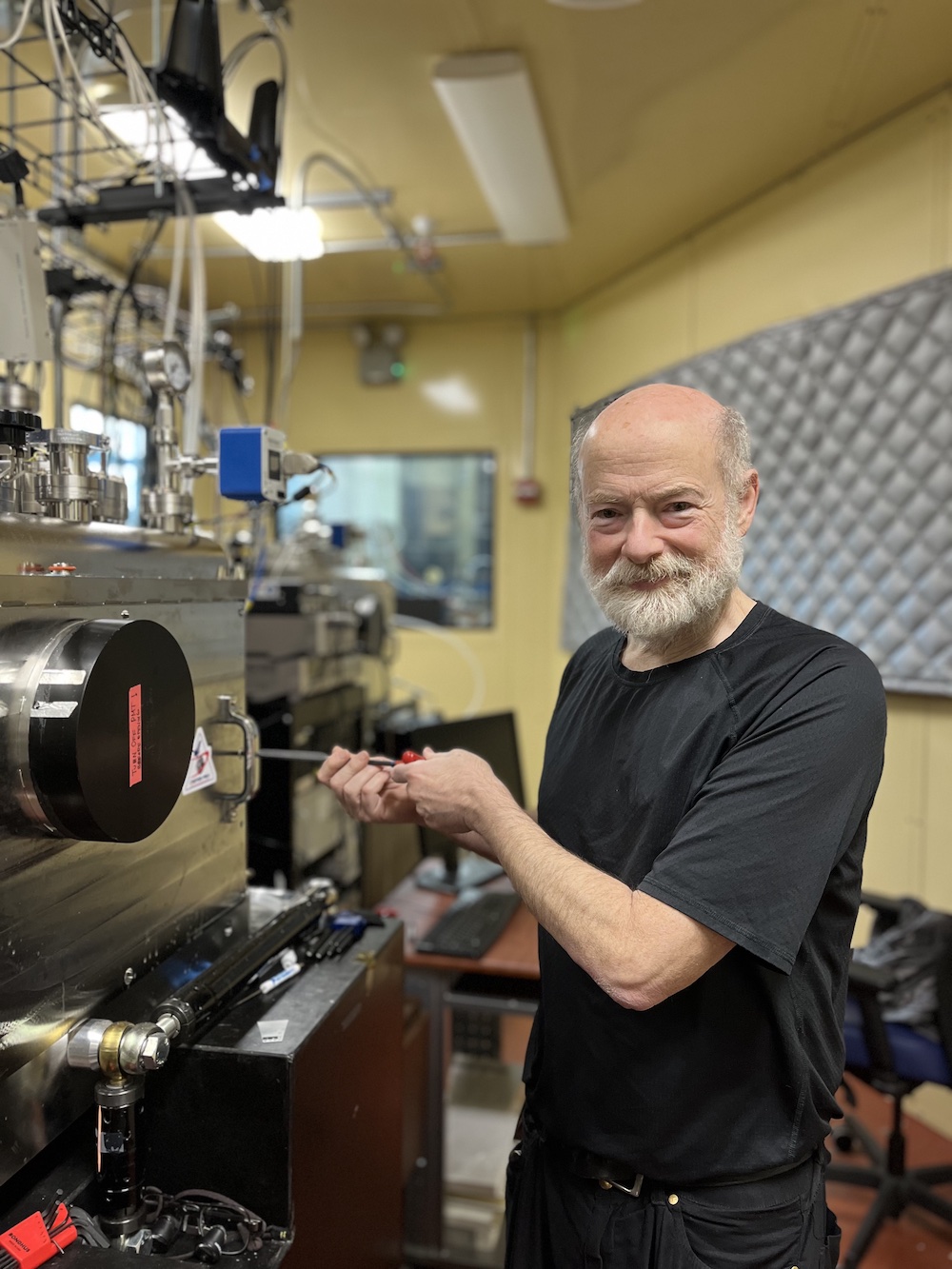 From the microscope at work to the telescope at home, Matthew Marcus is captivated by space sciences. In this interview, he shares some of the findings from Beamline 5.3.2.2 as well as stories from his long career in x-ray science.
From the microscope at work to the telescope at home, Matthew Marcus is captivated by space sciences. In this interview, he shares some of the findings from Beamline 5.3.2.2 as well as stories from his long career in x-ray science.
What do you work on at your beamline?
I’m a staff scientist at the scanning transmission x-ray microscopy (STXM) Beamline 5.3.2.2. We have a lot of environmental stuff, a lot of aerosol particles, and we just had a highlight about the carbon nanotube yarns. And, we look at extraterrestrial samples. We had samples of asteroid Ryugu from the Hayabusa mission, though I didn’t work on those. I have been involved with working on samples of asteroid Bennu from the OSIRIS-REx mission.
We’ve been looking at the organic matter, which there’s quite a lot of, and the hydrously altered minerals, which is evidence that there was water on the large precursor asteroid from which Bennu originated. That was kind of known before. We’re still working out what our data actually means.
For the Bennu samples, I work with Zack Gainsforth, who’s at the UC Berkeley Space Sciences Lab, Gerardo Dominguez at CSU San Marcos, Scott Sandford at NASA Ames, and a bunch of others.
Where has your career taken you, and what led you to the ALS?
I went to Bell Labs right after graduate school and spent 20 years there. I worked on a number of things, including liquid crystals and electromigration. It gradually became a better place to be from than to be at.
Then, I was sitting at the National Synchrotron Light Source (NSLS), being very frustrated because I was trying to do an experiment for which I didn’t have the equipment, when I got a phone call from a previous collaborator saying, “How would you like a job in California?”
And so, I went to KLA-Tencor for two years, helping develop a PEEM-like instrument. After that, I came to the ALS in 2000, and the rest is about two-thirds of ALS history!
What kinds of changes have you seen at the ALS, and what’s kept you here all this time?
Oh geez. Top-off injection, the sextupole upgrade. When I came, it was typical to have up to two beamline scientists, even on a bending magnet line. On undulator branch lines, there would be a beamline scientist for each endstation plus one for the beamline.
The work has been interesting and fun. And, I never wanted to become a professor because professors spend most of their time grubbing after money and managing students.
What sparked your interest in this field in the first place?
In Bell Labs I was working with synchrotron stuff. Some of my work involved doing x-ray absorption spectroscopy (XAS). I did a lot of running at SSRL and then later at NSLS when that came up. I was kind of a de facto beamline scientist for one of the beamlines, even though I was working in Bell Labs and not for NSLS.
Alastair McDowell was also at Bell Labs and doing a lot of work at NSLS. In particular, he built a microprobe kit. It was possible to put in this kit, and after a couple of days of tuning, do some microprobe at the beamline.
That experience served me well when it turned out that they needed somebody to get 10.3.2 working at the ALS. There was a strategic Laboratory Directed Research and Development (LDRD) project to bring in Alain Manceau from Grenoble to do environmental research. It was my job to learn from him what that entailed and to get the beamline capable of doing it.
Do you have any advice for users?
My advice to users of all beamlines is: contact your friendly beamline scientist before you come…or before you even write your proposal.
What do you like to do in your free time, and how did you pick up your hobbies?
I go out occasionally with my telescope and do some amateur astronomy, and I do yoga every day.
I’ve always been pretty flexible. I heard that Berkeley Lab had a yoga club, so I decided to give it a whirl and discovered that I liked it. My body liked it.
A guy at Bell Labs was selling his telescope, and he said that he had to make the choice between telescope and marriage. So he chose the marriage, and I got the scope.
In April, I’m going on an organized tour to Mexico to see the eclipse!